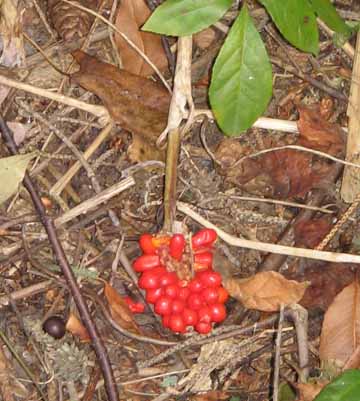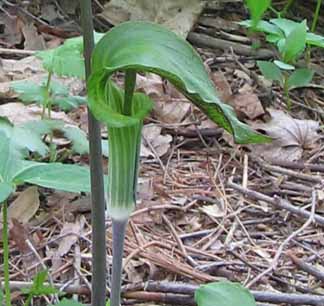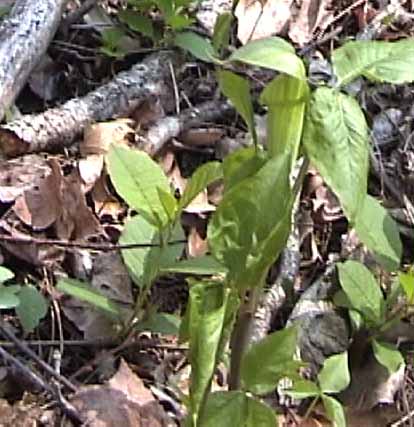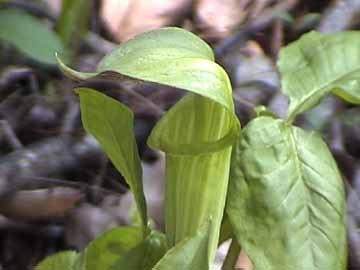Plants and People Project
Jack in the Pulpit - Arisaema triphyllum
Many Native tribes used it for medicine in different ways. "The Fox tribe used the seed of Jack-in-the-pulpit to mystically predict whether a patient would recover or die." Pizzo & Associates, Ltd.
Eastern Native Americans ate the tuber, or corm as it is called. It must be boiled first to remove the calcium oxalate crystals which will cause burning if eaten raw. One of the plants nicknames is Indian Turnip. Wild Flowers and Plants of North Carolina
They used the corm to make a medicine to treat stomach gas, asthma and rheumatism.
Other names include: marsh pepper, cradleboard flower and the silent preacher.
"Each plant has one flower that rises between two leaves, each with three pointed oval leaflets." Ryerson Woods Spring Wildflowers
Caution: The plant parts can cause skin blistering.
The flower produces a cluster of red berries, which may
be food, for wild Turkeys, Ring-necked Pheasant, and Wood Thrushes. Laurentian
Center
Berry stalk of Jack in the Pulpit


Identification and other facts / PLANTS database
Jack in the Pulpit


DISCLAIMER: These pages are presented solely as a source of INFORMATION and ENTERTAINMENT. No claims are made for the efficacy of any herb nor for any historical herbal treatment. In no way can the information provided here take the place of the standard, legal, medical practice of any country. Additionally, some of these plants are extremely toxic and should be used only by licensed professionals who have the means to process them properly into appropriate pharmaceuticals. One final note: many plants were used for a wide range of illnesses in the past. Be aware that many of the historical uses have proven to be ineffective for the problems to which they were applied.